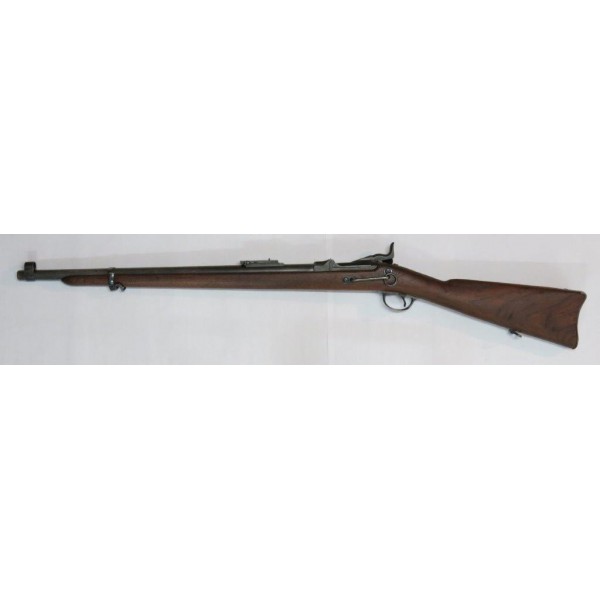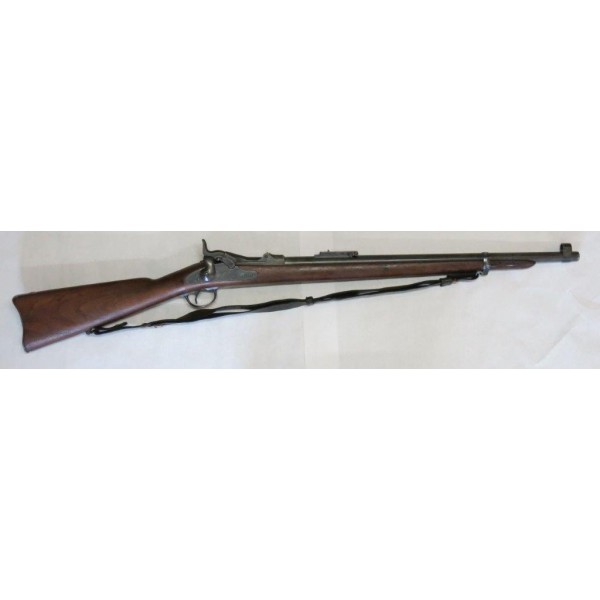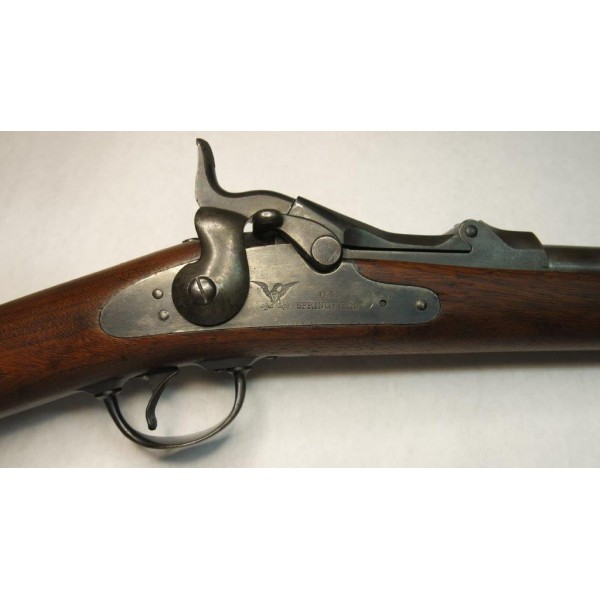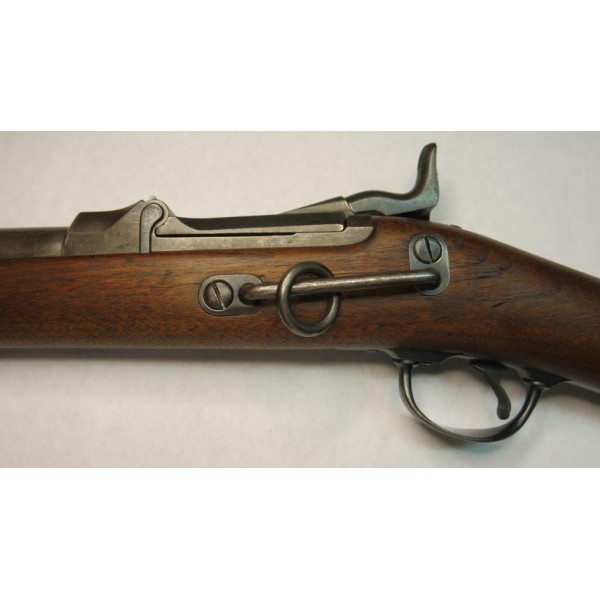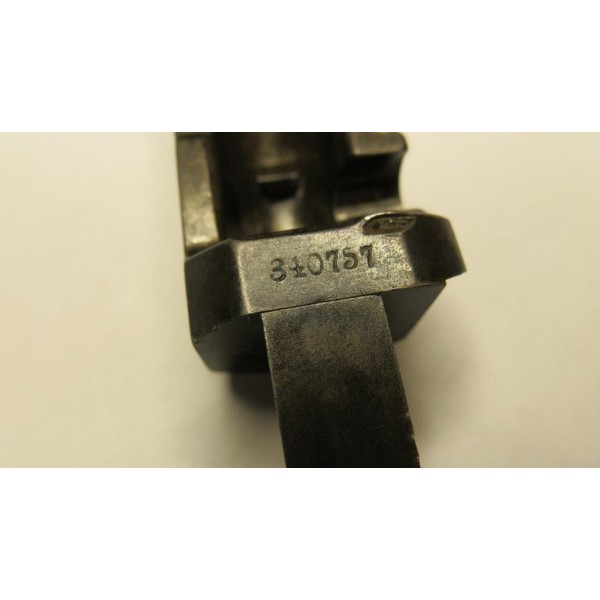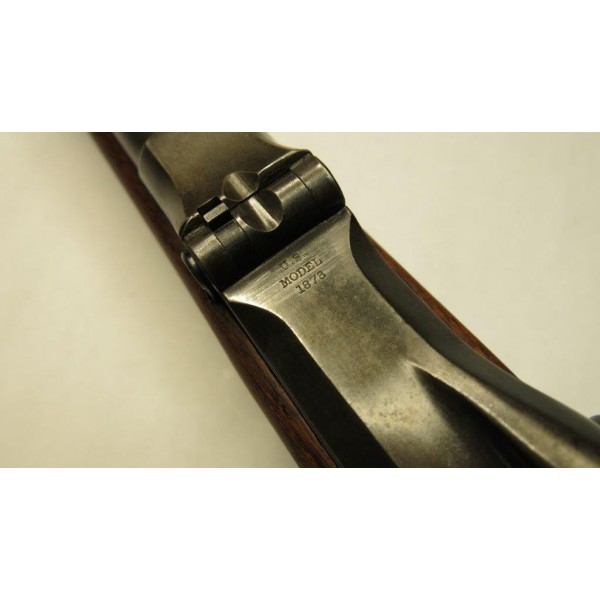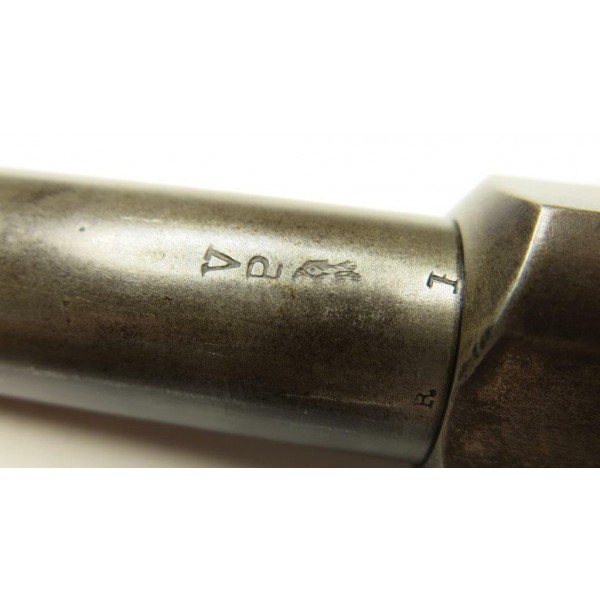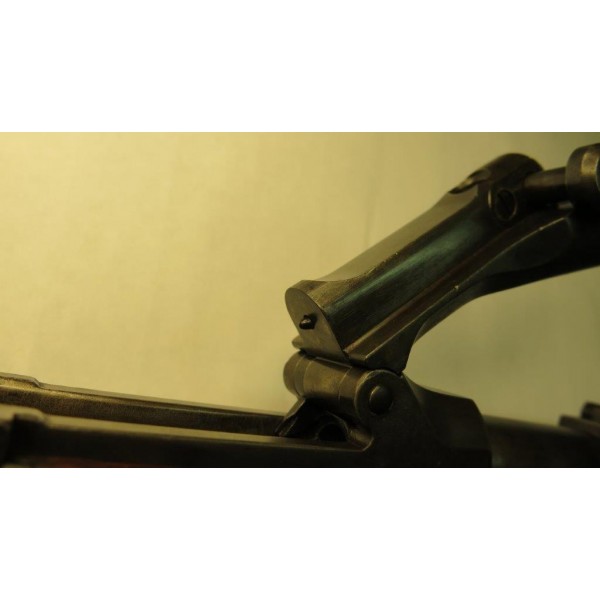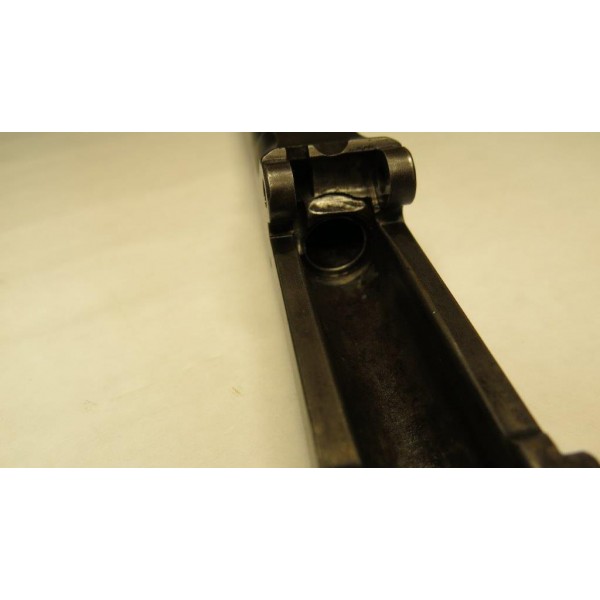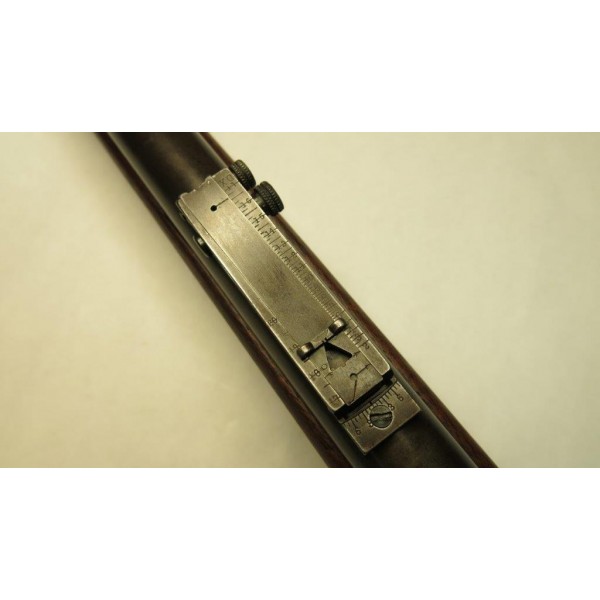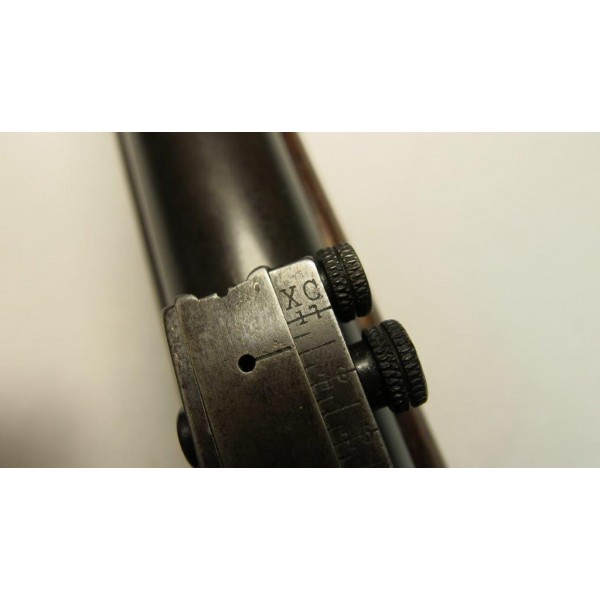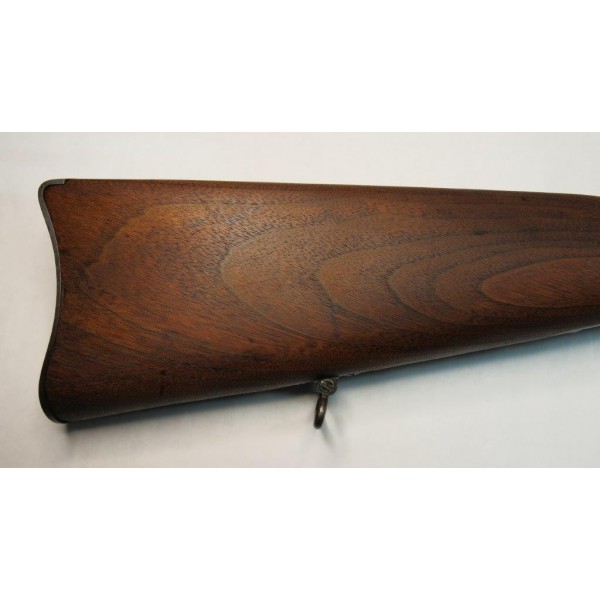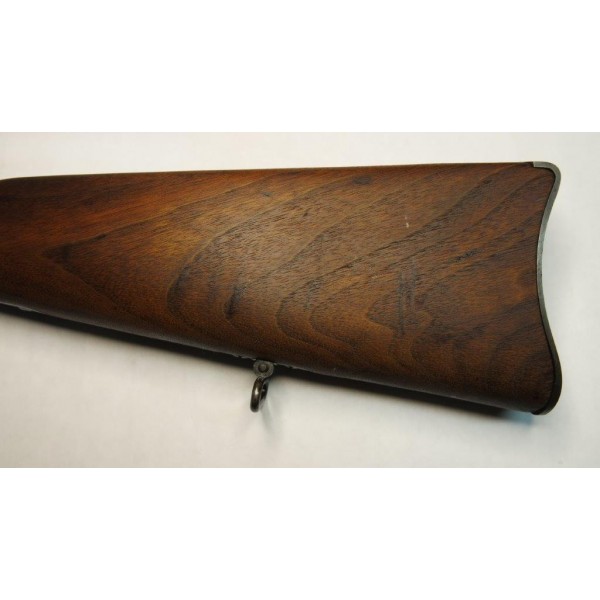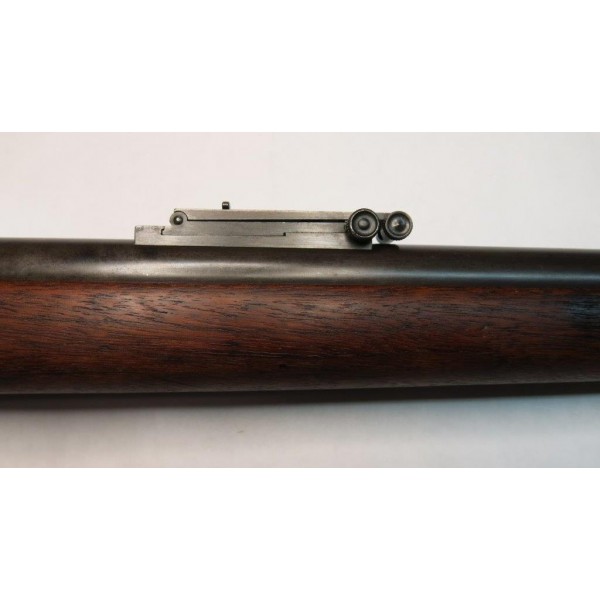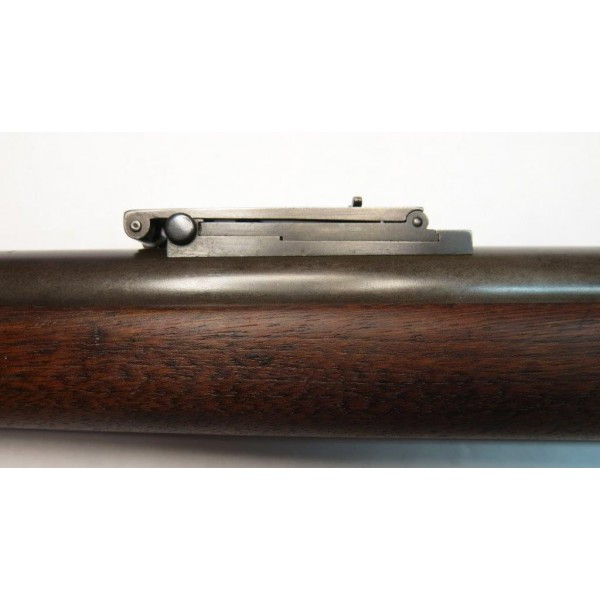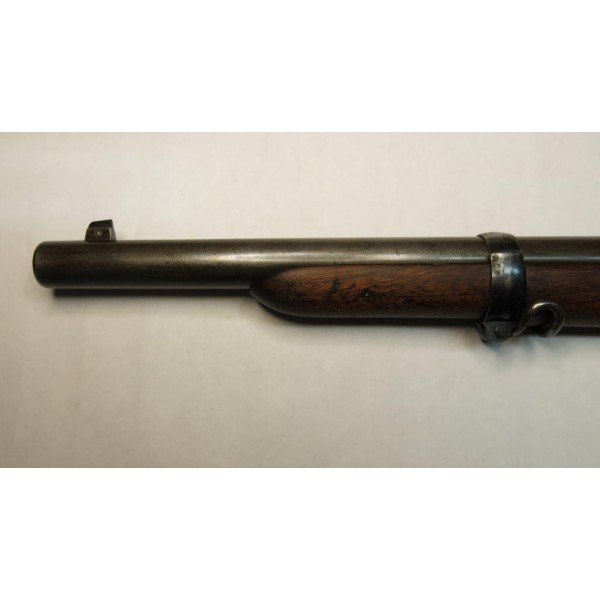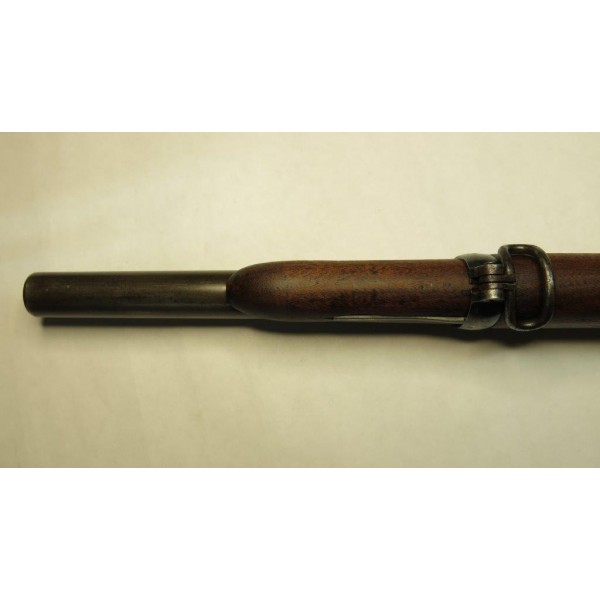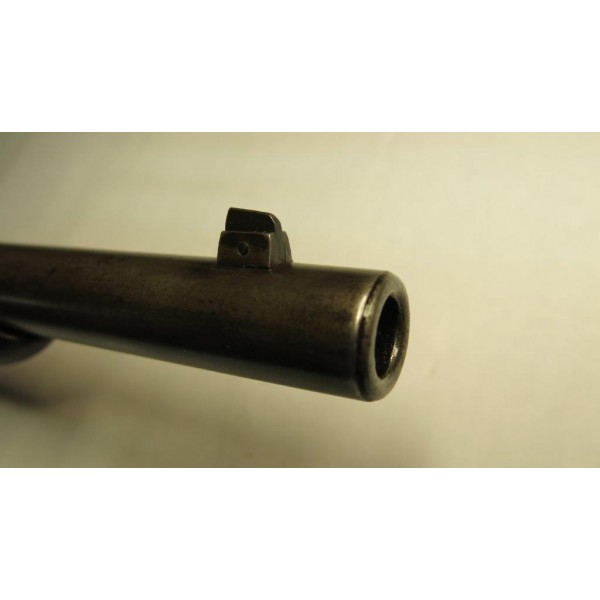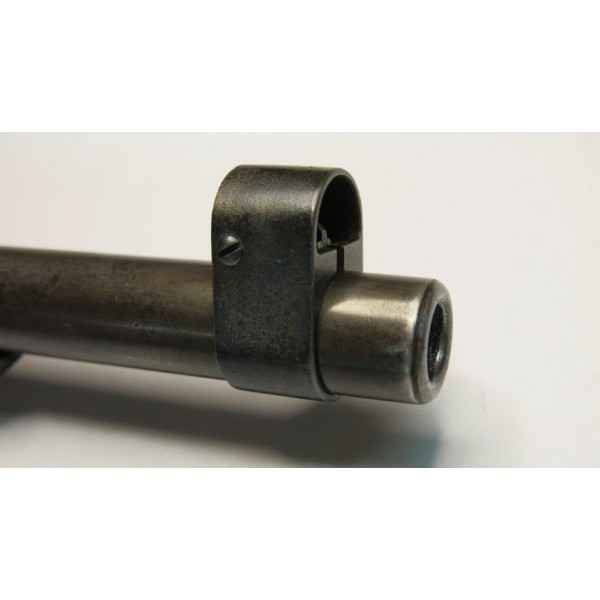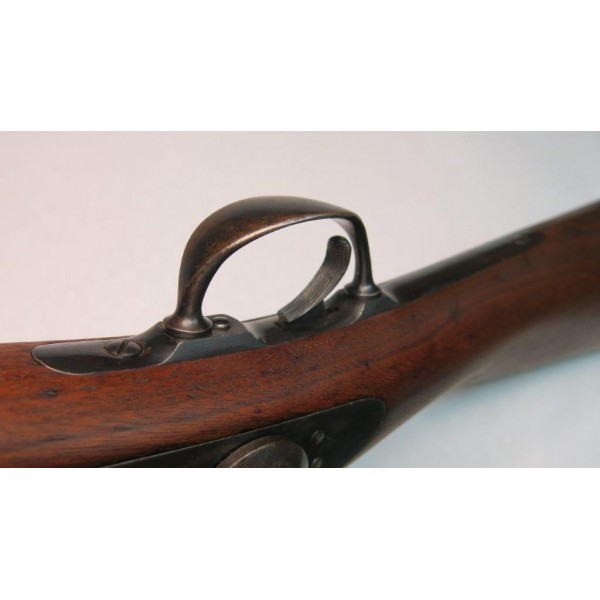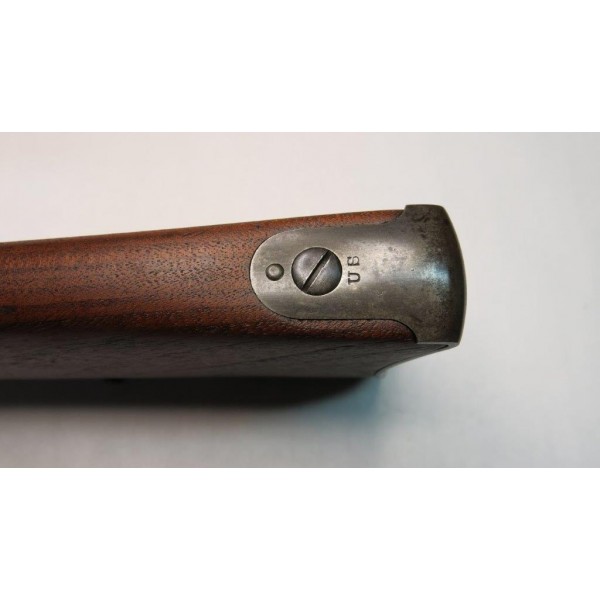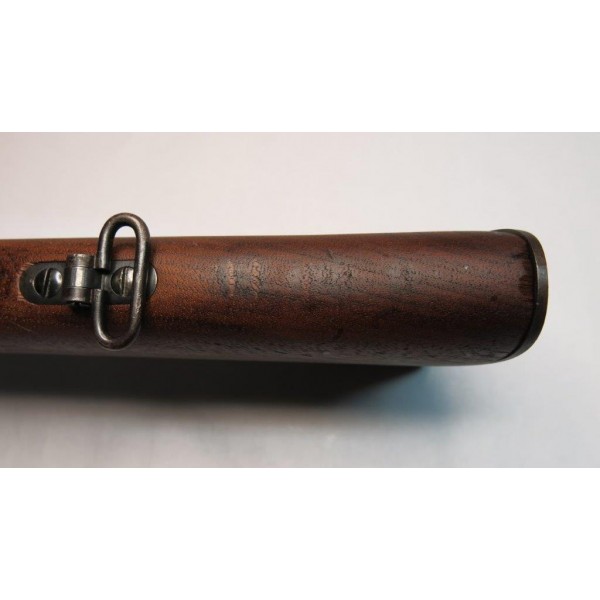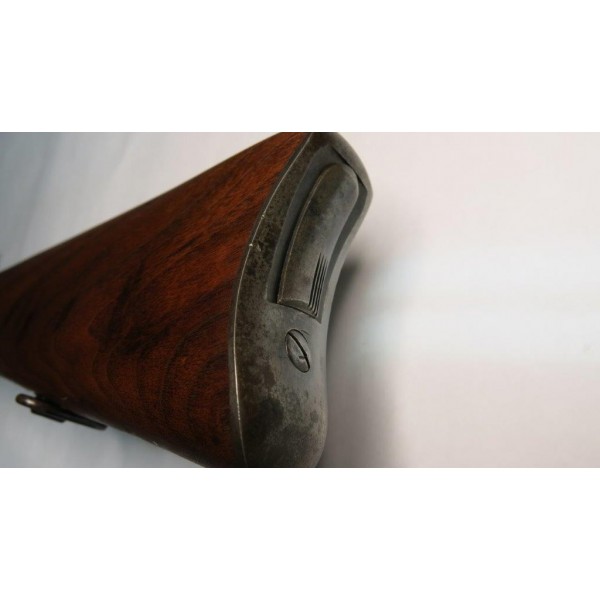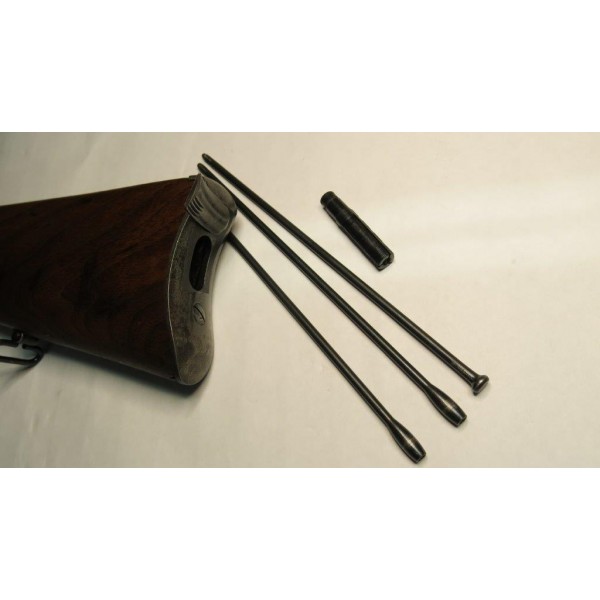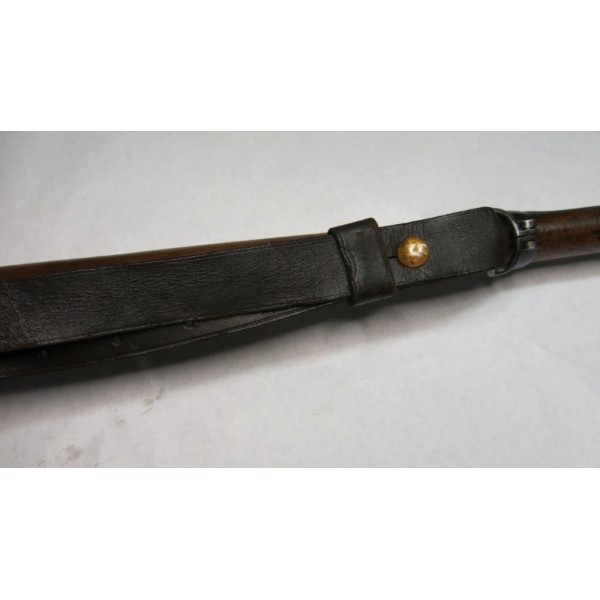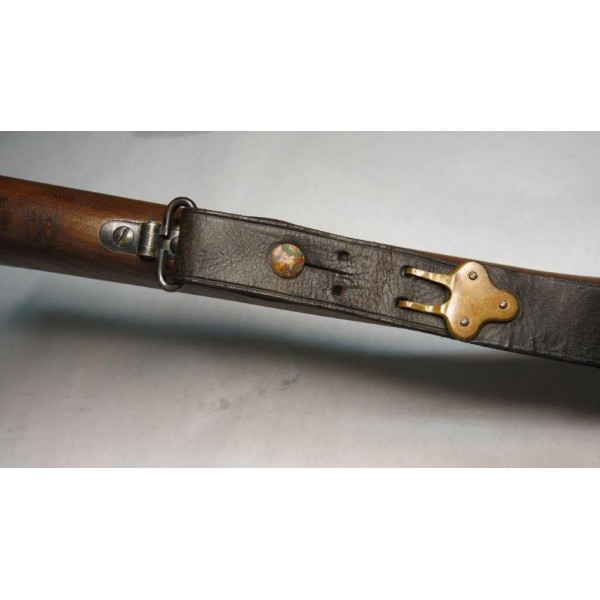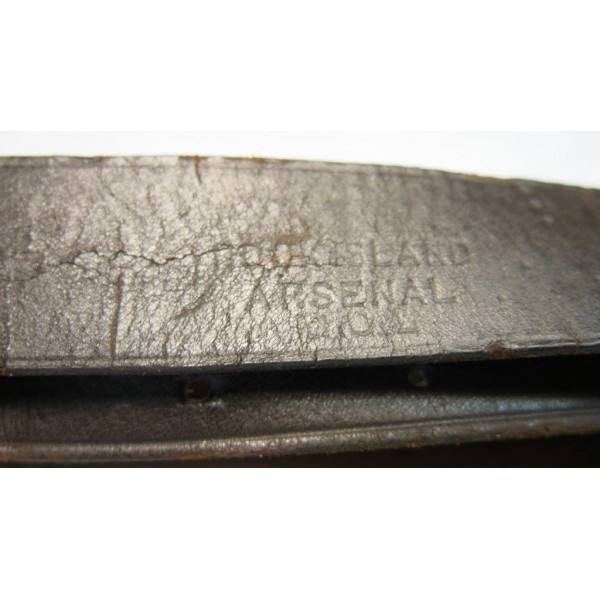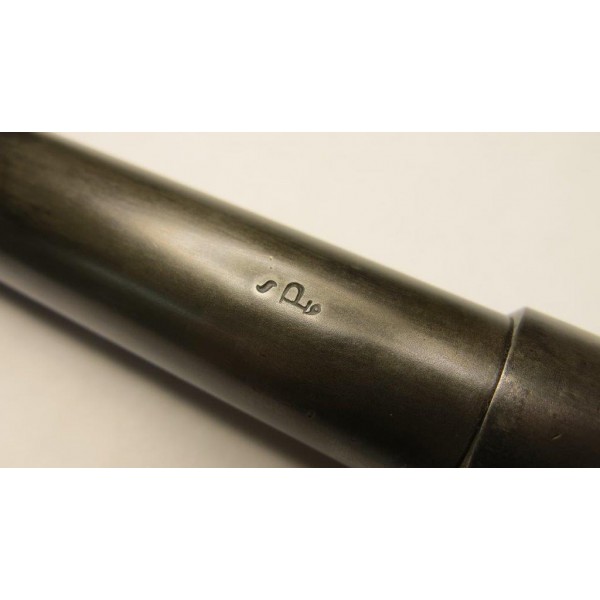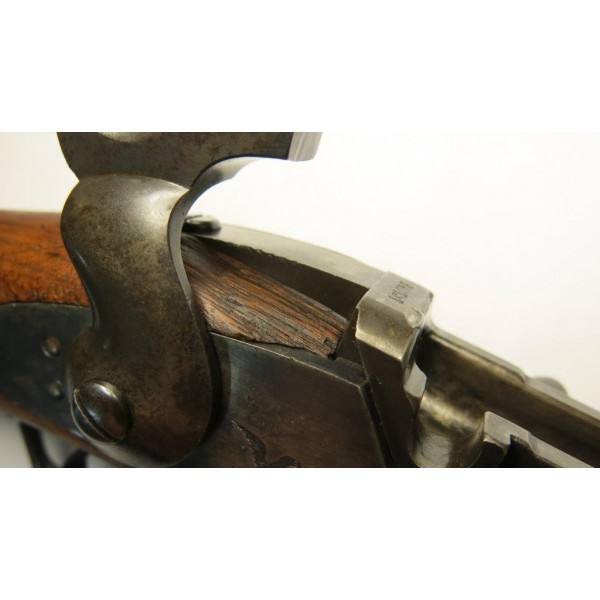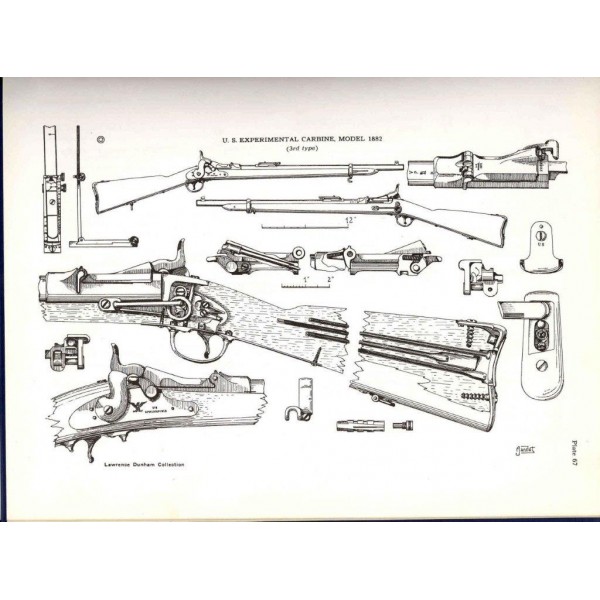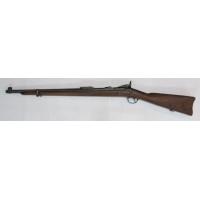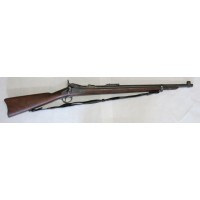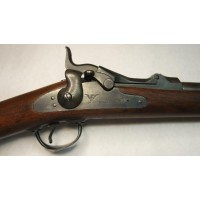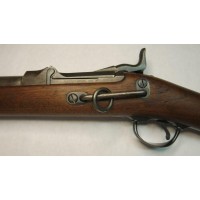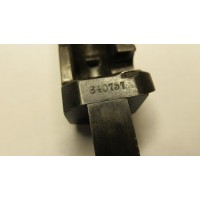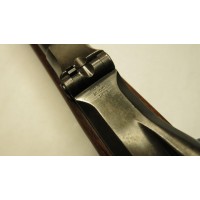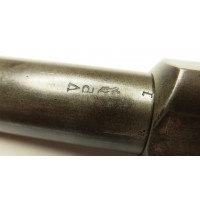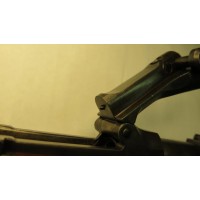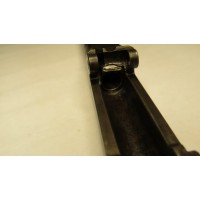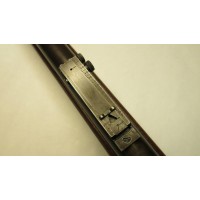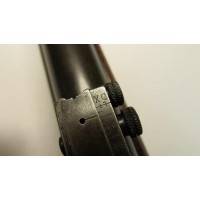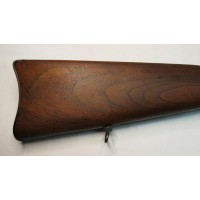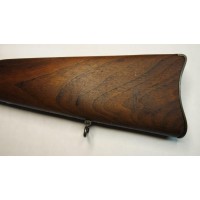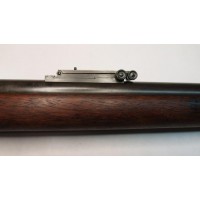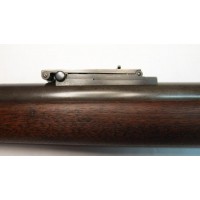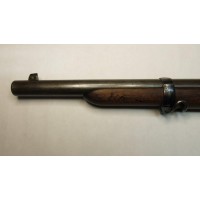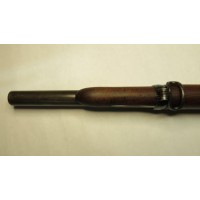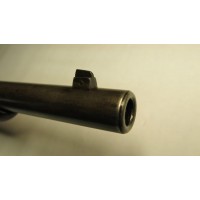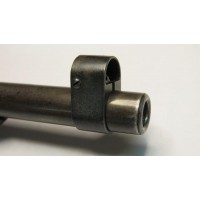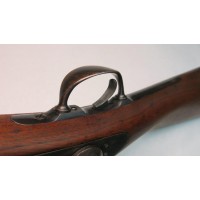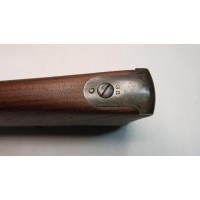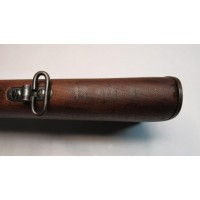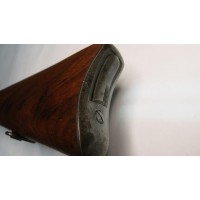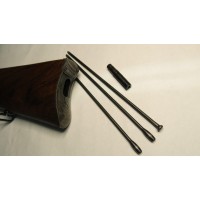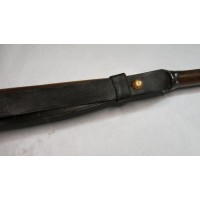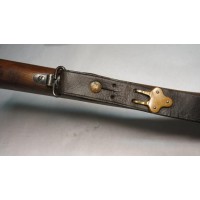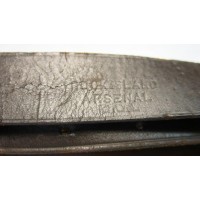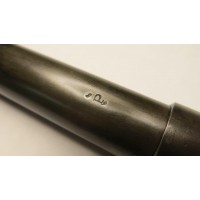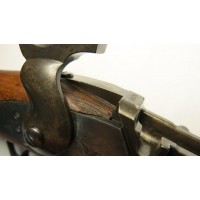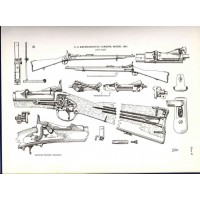Springfield Armory Model 1886 Experimental Long Carbine
Springfield Armory Carbine, Caliber .45-70, 24 inch Barrel
Model 1886 Experimental Long Carbine
Serial number 340757
These experimental carbines were never officially given a model number, although the unofficial designation of Model 1886 was given by today’s collectors and authors because of the year they were made. It is the second attempt at developing an arm that could be used universally by infantry, artillery and cavalry and use .45-70 rifle ammunition. Some sources state that they were meant to use the .45-70-405 and others say the .45-70-500. The first attempt at a universal arm was in 1882 with a 28” barreled short rifle using the .45-70-405.
Approval for the manufacture of the M1886 carbine was given by the Board on Cavalry Equipment on June 14, 1885. There were 1,013 of these carbines made in a two week period in April of 1886 for trial purposes. The receivers used were of the wide 1878 style and have serial numbers between 330,000 and 354,000. A few more were made in the fiscal years of 1887 (one) and 1888 (two). There were 315 issued for use on August 13 of 1886 and the remainder on August 16 and 17 by Order for Supply #1202. They were sent to Forts Lincoln and Cheyenne as well to arsenals at Fort Leavenworth, San Antonio, Vancouver Barracks and Benicia. They were eventually pulled from service in 1888 and returned to Springfield Armory where they were refurbished. In the 1890’s they were distributed to various guard units throughout the U.S. During their lengthy service many parts were replaced, repaired, refinished or salvaged for parts. The survivability of and as issued original piece is very low.
The 24” barrels were specifically made for this model. It was previously thought that they were shortened rifle barrels but recent research has proven this theory wrong. They are thicker than rifle barrels at any comparative point. The thoughts about this are that they were intended to use the rifle round instead of the carbine round. The extra weight would help with control of the added recoil. They were not thinned forward because they were not intended to be used with a bayonet. The crowns are very distinctive in that they show a very pronounced ring at the outside edge. The crowns are believed to have been cut with the standard rifle and carbine crowning tool that was designed for a smaller diameter muzzle. The left rear of the barrels are marked with the standard viewing and proof marks of V, P, eagle head and P. The rifling is of three equally spaced lands and grooves with a 1 in 22” twist. The bore of this carbine is in very good condition with a few scattered pits. The crown shows moderate cleaning rod wear and some frost for the first 1/4”.
The rear sight is a specially made 1884 Buffington with the letters of XC (experimental carbine) stamped on the upper right corner of the leaf. The sight was positioned the same distance from the receiver as the rifle. The graduations are different than the standard Buffington rifle and carbine sights. Due to the different barrel contours between this carbine and the standard carbine and rifle, the sights are not interchangeable. The front sight is the standard carbine sight with the replaceable pinned in blade. These carbines front sight blade does appear to be a replacement. Front sight hoods were available and issued by request. The hood on this carbine is proper and authentic.
The breach blocks have the low arch and are marked with U.S. over MODEL over 1873. This breach block fits the description of the ones made between December of 1878 and February 1883.
The lock plates are marked with the Eagle motif and then U.S. over SPRINGFIELD. The locks have a three notch tumbler. The hammer has the stamped knurl in an oval on the thumb spur and the nose has a flat face without the angled lower lip. The lock plate fits the description of plates used between serial numbers 80,000 and 380,000.
The trigger bows are of the carbine design without provisions for a sling swivel. The triggers are the M1883 corrugated style.
The stocks for these carbines were specifically produced for this carbine and are 40” long. They may or may not have the SWP / 1886 inspectors’ cartouche and P firing proof rear of the trigger plate. The inspector’s cartouche and firing proof P are not visible on this carbine. They do not have a nose cap. They have a short wrist and a long comb. The barrel band and sling swivel are a modified M1873 marked with a small letter U. The front sling swivel is curved to conform to the curvature of the stock so the carbine can be easily inserted and withdrawn from the saddle boot. The rear sling swivel is attached to the underside of the stocks butt with screws and is centered 4” forward of the butt plate. These carbines also have the standard carbine sling ring and bar on the left side. The stocks butt has a storage compartment and butt plate with a swiveled closure intended for three cleaning rod sections and 1882 ruptured shell extractor. The butt plates can be found with the older M1877 keyhole design or the later M1880 oval design. It is believed the keyhole design is most proper because the M1879 combination tool was not intended to be part of the butt kit. This butt plate has the M1880 oval hole and is marked US on the upper tang. This carbines stock has been sanded and this is most evident around the butt plate and lock plate. Under the butt plate, there are remnants of a coat of varnish that has been removed at some time. A chip of wood is missing rear of the thumb latch recess at the right side of the receiver tang. An insignificant crack is visible at the back top of the lock recess and extends up into the receiver inletting.
The three cleaning rod sections are 9.25” long with a body diameter of 0.189”. The end sections head is 0.375” in diameter and the other two are 0.311” in diameter. The sections are threaded with the Whitworth Standard 26 threads per inch.
The sling is authentic and proper for this carbine.
Other markings
Lock plate 4, B, E, &, M and A
Main spring J on the hook end
Sear V
Bridle L
Trigger plate D
Trigger 3 and A
Barrel left rear R
Receiver bottom Y and 2
Bottom rear of barrel ~, P and an unidentified mark
Stock under butt plate 1
Head space Go = .070” No Go =.075” .076”
This carbine has been researched by Springfield Research Services and no data was found.

